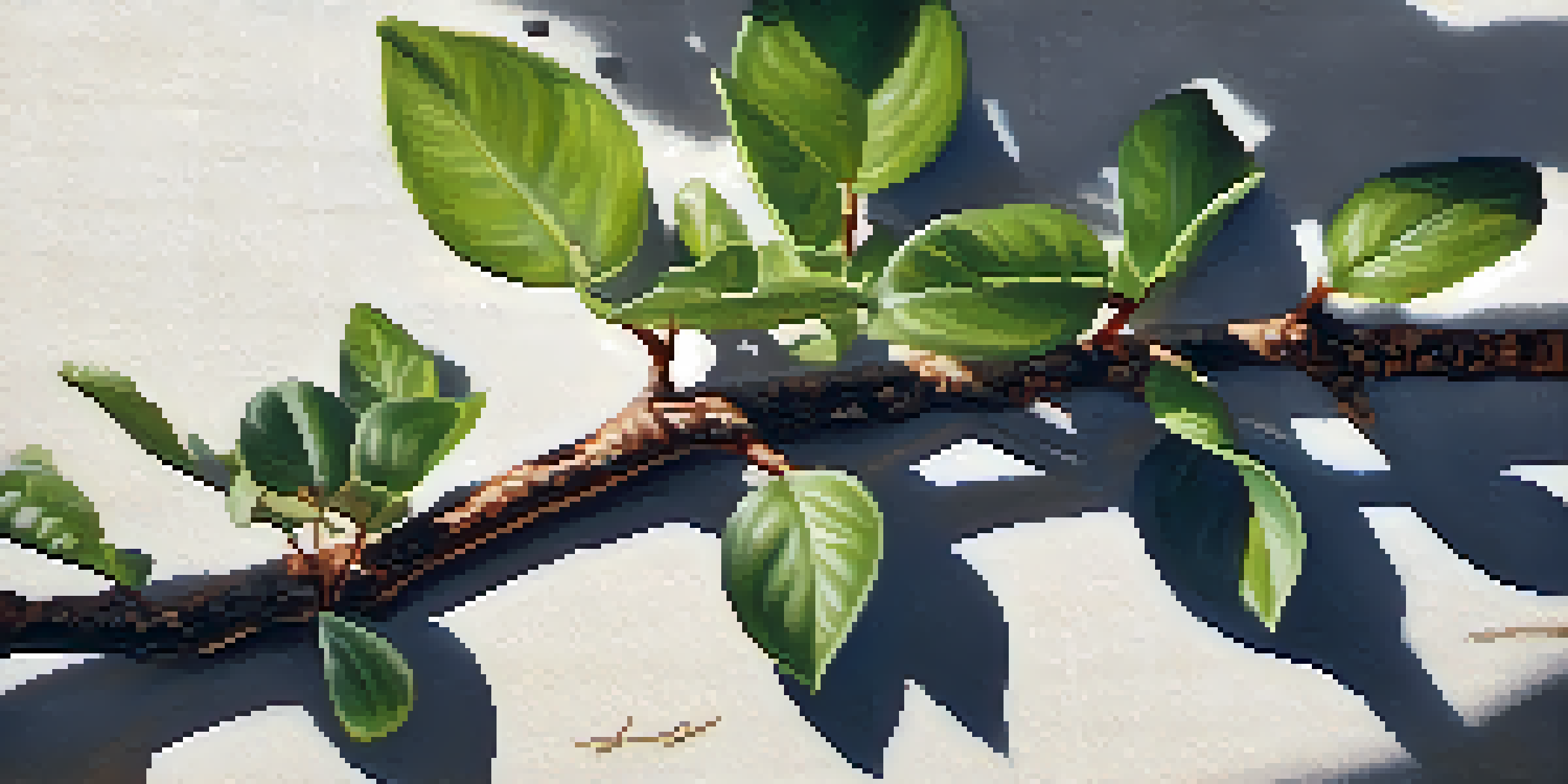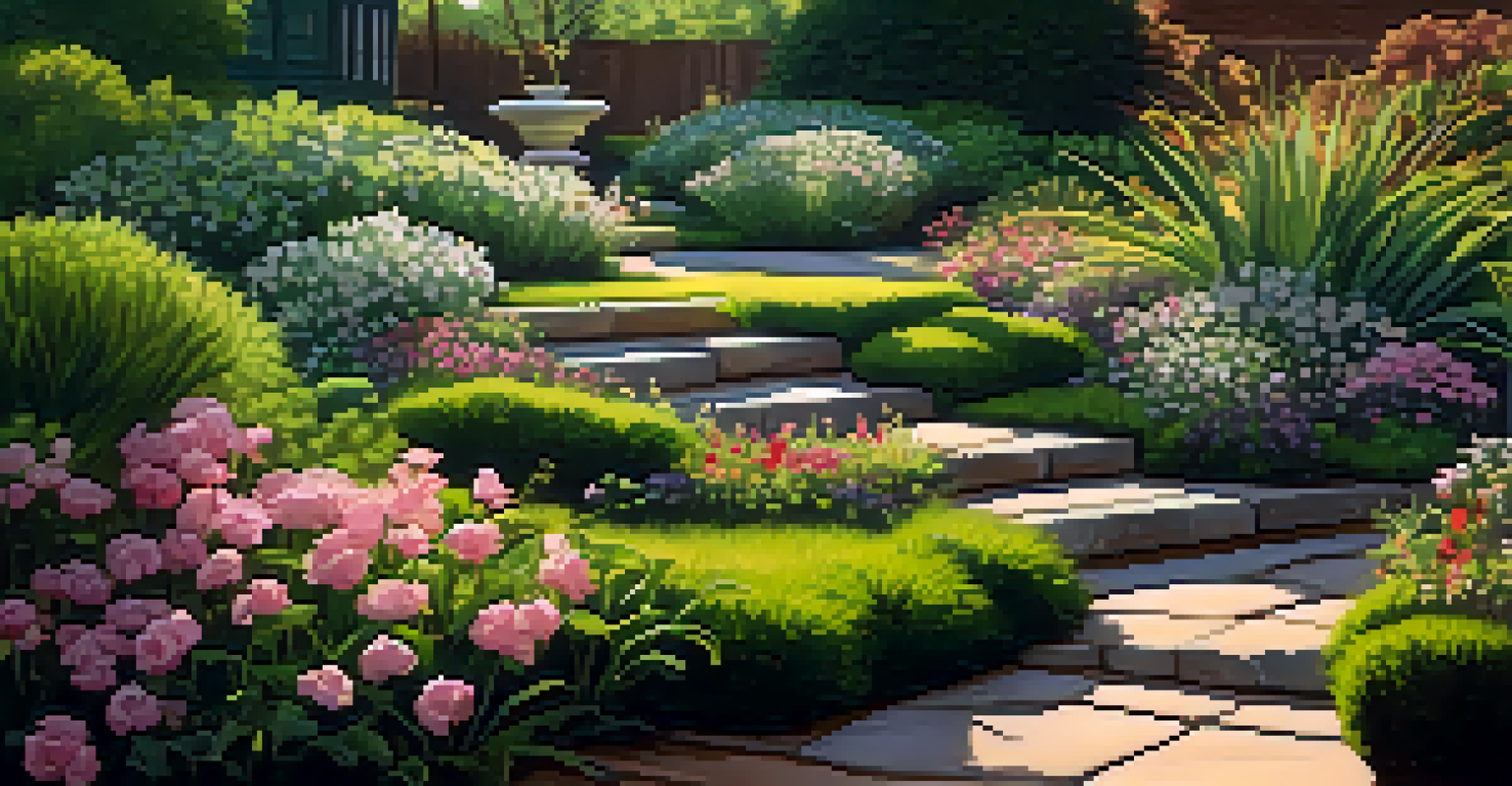Layering Techniques: A Step-by-Step Plant Propagation Guide

Understanding Plant Layering: The Basics of Propagation
Plant layering is a propagation technique that encourages new roots to form while the cutting is still attached to the parent plant. This method is especially beneficial for plants that may struggle with traditional cuttings. By using layering, you can create new plants without the need for complicated equipment or processes.
To plant a garden is to believe in tomorrow.
There are several types of layering techniques, including simple layering, air layering, and mound layering. Each method has its unique advantages and is suitable for different types of plants. Understanding these options will help you choose the best approach for your gardening needs.
Whether you're looking to expand your garden or share plants with friends, mastering layering techniques can be incredibly rewarding. Not only does it increase your plant collection, but it also allows you to nurture new growth in a way that's gentle and effective.
Simple Layering: A Beginner-Friendly Approach
Simple layering is perhaps the easiest technique to start with, making it perfect for beginners. To get started, select a healthy branch from your plant and gently bend it down to the soil. You’ll want to make a small incision or scrape the bark slightly to encourage rooting.

Once you've prepared the branch, bury a portion of it in the soil, leaving the tip exposed. Use a stone or a small peg to hold it in place. Keep the soil moist and watch for roots to develop, which can take several weeks, depending on the plant species.
Master Plant Layering Techniques
Plant layering is a simple and effective propagation method that allows gardeners to create new plants while keeping them connected to the parent.
After a few months, you can separate the new plant from the parent plant and transplant it elsewhere. This method not only promotes growth but also fosters a strong connection between the plants, making it an ideal choice for nurturing your garden.
Air Layering: Propagating Plants Without Cutting
Air layering is an advanced technique that allows you to propagate plants without detaching them from the parent. This method is ideal for woody plants, such as magnolias or citrus trees, where traditional cuttings might fail. The process involves creating a wound on the stem and encouraging roots to form in the air.
Gardening is not a sport; it’s a way of life.
To perform air layering, you'll need to remove a ring of bark from the stem and wrap it in moist sphagnum moss. Cover the moss with plastic wrap to keep it moist while allowing light in. Over time, roots will develop within the moss, ready for you to transplant.
This technique might seem complex, but with patience, it can yield stunning results. Air layering not only provides a means to propagate but also offers a chance to create new, healthy plants directly from the parent.
Mound Layering: A Unique Method for Ground Covers
Mound layering, or stooling, is an effective way to propagate ground cover plants, such as currants or gooseberries. This process involves cutting back the parent plant to the ground level and encouraging new shoots to root in the soil. It’s a great strategy for rejuvenating older plants while expanding your garden.
As new shoots emerge, you can pile soil around them, encouraging roots to form along the buried portions. Over time, these shoots will establish themselves, allowing you to separate them and replant elsewhere. This method can lead to a more dense and lush garden bed.
Timing is Key for Success
Choosing the right time, ideally during the active growing season, significantly increases the chances of successful root development in layered plants.
Mound layering is not just about propagation; it also helps in maintaining the health of your existing plants. By promoting new growth, you’re enhancing their vigor and resilience, ensuring a thriving garden for years to come.
Choosing the Right Time for Layering Techniques
Timing plays a crucial role in the success of layering techniques. Most plants thrive during their active growing season, typically spring or early summer. This is when the plant is full of energy, making it more likely to establish roots quickly.
Avoid layering during extreme temperatures, either hot or cold, as this can stress the plant and hinder growth. Observing your plant's natural growth patterns will help you determine the best time for layering.
By choosing the right moment, you set yourself up for success. Remember that patience is key; each plant species will have its own timeline for root development. Keeping a close eye on your plants will help you know when they're ready for transplanting.
Essential Tools and Materials for Successful Layering
Having the right tools and materials on hand can make your layering experience smoother and more successful. Basic supplies include pruners, a small shovel, and materials like sphagnum moss or rooting hormone for air layering. These items will help you create the ideal conditions for rooting.
You may also want to gather some biodegradable twine or plant clips to secure branches in place. Keeping your workspace organized will streamline the process, allowing you to focus on your plants without unnecessary distractions.
Avoid Common Layering Mistakes
Being aware of pitfalls such as selecting incompatible plants, overwatering, and impatience can lead to a more successful layering experience.
Investing in quality tools not only enhances your gardening experience but also contributes to the overall health of your plants. When you take care of your tools, they will, in turn, help you take care of your precious plants.
Common Mistakes to Avoid in Plant Layering
Even seasoned gardeners can encounter challenges when it comes to layering. One common mistake is failing to select the right type of plant for the method chosen. Not all plants respond well to layering, so it's essential to do your research beforehand.
Overwatering is another frequent pitfall. While maintaining moisture is crucial, too much water can lead to rot, particularly in air layering. Be mindful of your plant's needs and adjust your watering accordingly to promote healthy root development.

Lastly, impatience can lead to frustration. Layering takes time, and not every attempt will be successful on the first try. Embrace the learning process, and remember that even experienced gardeners have their share of failures.
Expanding Your Garden with Successful Layering Techniques
Once you've mastered layering techniques, the possibilities for expanding your garden are endless! You can create new plants to fill in gaps, share with friends, or even start a small plant business. The beauty of propagation lies in the ability to multiply your efforts with minimal investment.
Consider experimenting with different types of plants, allowing you to diversify your garden. From flowering shrubs to fruit-bearing trees, layering can help you create a vibrant and varied landscape.
Embrace the joy of nurturing new life and watch your garden flourish. With each successful layering, you're not just adding plants; you're cultivating a deeper connection to nature and the satisfaction of growing something from scratch.